Prime Minister Narendra Modi visited Kathmandu from November 25-27 to participate in the 18th SAARC Summit. Though the visit was primarily for a multi-lateral event,the summit meeting of the South Asian Association for Regional Cooperation (SAARC), it had a significant bilateral component as well. This paper aims to focus on this aspect in the context of its impact on the overall Indo-Nepal relations.
This was Modi’s second visit to Kathmandu following his earlier bilateral visit in August 2014. During that visit, it may be recalled that Modi had established a level of personal rapport, never witnessed before in Indo-Nepal relations, with virtually all sections of the Nepalese community, cutting across social, political and ethnic divides. It would not be an exaggeration to say that he raised the level of relations, often bogged down with sectoral political considerations and unreal concerns and doubts, to a level never attained before. He came out as an Indian leader truly committed to Nepal’s development and the well being of its people.
These sentiments were further reinforced during his meeting with his Nepalese counterpart on the sidelines of the UNGA meeting in New York in September 2014.
Even though the visit started with an element of disappointment in a section of the community and the media on account of the last minute cancellation of his proposed visits to Janakpur, Lumbini and Muktinath, he exhibited grace by publically expressing regret for the change in the very first engagement on the Nepalese soil on the 25th, soon after landing in Kathmandu.
The significant achievements during this visit on the bilateral front included:-
(i) Handing over of a modern Trauma Centre: The Trauma Centre was constructed with financial and technical support from the Indian government, was jointly inaugurated by the Modi and Nepalese Prime Minister Sushil Koirala. Speaking on the occasion, Koirala described India- Nepal relations as exemplary and expressed belief that such support would further deepen relations between the two countries. Modi said that the project was driven by a ‘sacred objective’ of contributing to protecting the lives of the Nepali people. He added that the dream of all Indian people would be addressed if the Trauma Centre is able to provide quality health service to the Nepalis and underlined the Indian government’s readiness to provide necessary human and technical support for the Centre.
(ii) Handing over of a multi – purpose helicopter to Nepal Army at a function at the army pavilion in Tundikhel, Kathmandu, on November 26: The helicopter is part of the assistance exchange between the two nations. The 14- seater Advanced Light Helicopter has the capacity of maximum cargo sling of 1500 kg and can fly even over 20, 000 feet.
(iii) Signing of a Project Development Agreement (PDA) on November 26, between the investment Board of Nepal and the Sutlej Electricity Corporation (SEC), the promoter of Arun III Hydropower Project, providing for 24 units of free electricity to the locals and Nepal receiving 21.9 per cent free electricity generated from the project. SEC would also study the upstream and downstream impact within six months of PDA signing and complete the construction of the project by 2020.
(iv) The Government of Nepal had decided to spend the amount on Budhi- Gandaki Hydropower Project deemed as the national pride project, and on Mahakali Irrigation Project. Cabinet meeting held on November 25, decided to sign the above mentioned agreement promised by the Indian PM during his visit to Nepal last August.
(v) Signing of an agreement to construct Nepal Police Academy in Kabhre district with financial aid provided by Indian Government: As per the agreement, the Government of India will provide over eight billion rupees grant for the construction of the academy.
(vi) Signing of an agreement for development of tourism between the two countries by Secretary, Ministry of Culture, Tourism and Civil Aviation, Nepal and Indian Ambassador Ranjit Rae.
(vii) Agreement to establish ‘Sister Corridor’ between Janakpur- Ayodhya, Kathmandu- Varanasi, Lumbini- Bodh Gaya; to adopt traditional medical treatment system and youth exchange programme between the two countries.
(viii) Kathmandu–Delhi bus service was also launched simultaneously from both ends.
Conclusion of these slew of agreements effectively countered the doubts expressed earlier by a section of media and intellectuals of Nepal that India only ‘promises but China delivers’. These agreements have confirmed India’s sincere intention towards the all round development of Nepal.
The visit was once again marked massive public euphoria for Modi with chants of ‘Modi-Modi’ being raised wherever he went, a phenomenon witnessed during his election campaign in India and repeated during his public functions in New York and Sydney. In contrast, the other visiting leaders virtually drew a blank!
But the Prime Minister did attract some criticism in a section of the media for his advice to the Nepali political leaders during the inauguration of the Trauma Centre, to draft the new constitution based on consensus rather through majority in the Constituent Assembly. Modi had added that the first draft of the constitution should be owned by all. “A constitution drafted through consensus can always be amended, when needed, through two third majority”, he had suggested.
This suggestion was apparently not taken in proper spirit by the media and a section of the ruling NC and UML leadership. UML Secretary Yogesh Bhattarai remarked, “ His statement, his style and the language he has used all tantamount to orders”. Bhattarai added, “We will not follow his orders. We do not need his sermons”. Constituent Assembly member Gagan Thapa of Nepali Congress was harsher in his comment that “Let it be known to Modi that we have ability to take our own decision. And, we will take our own decision. It is our own prerogative to decide what sort of constitution we want for ourselves”.
However, during the press briefing on November 27, Prime Minister Sushil Koirala clarified that the Indian Prime Minister had no intention to pressurize Nepali leaders and his advice should be taken purely as neighbor’s advice only. Foreign Minister Mahendra Bahadur Pandey too said that “it was a friendly advice of India”. He further said that “drafting of a timely constitution by forging consensus among all political parties is what we are trying to achieve, and should not be seen as interference in our internal matters.
While it is heartening to note that some substantive forward movement has taken place in the ‘delivery’ process on the agreements arrived at during the earlier meeting, given the prevailing level of skepticism and the Nepali mindset on India-Nepal relations, continued monitoring of the various projects to ensure timely delivery, can not be over emphasized.
Published Date: 15th December 2014

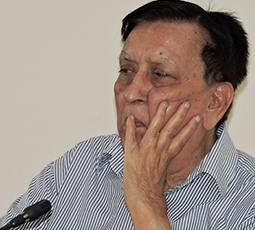
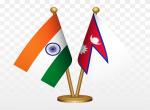
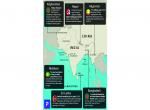
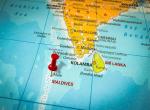

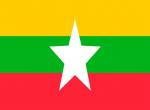
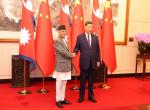
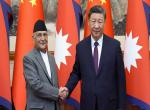
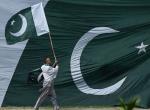
Post new comment